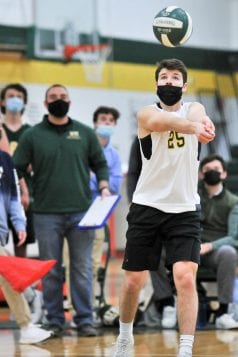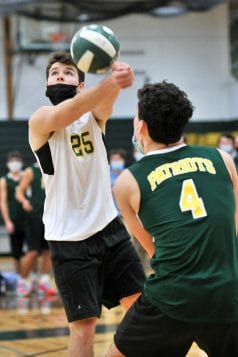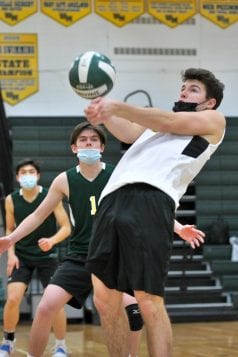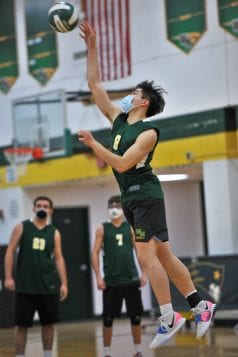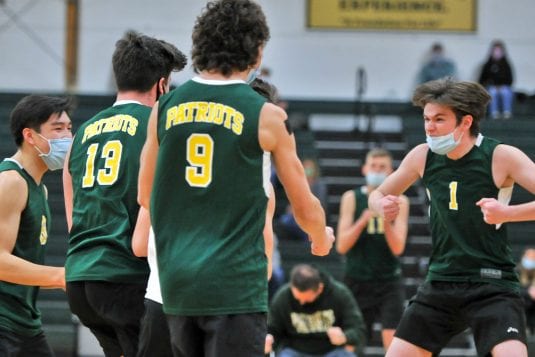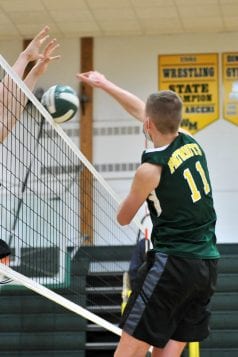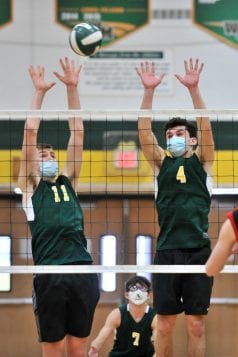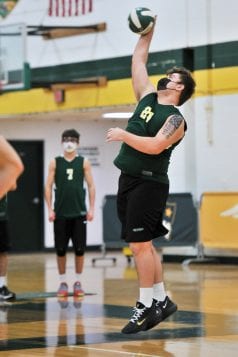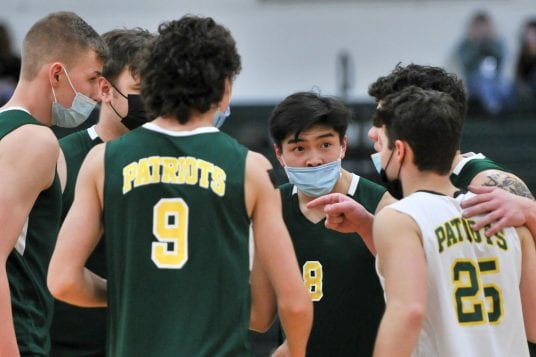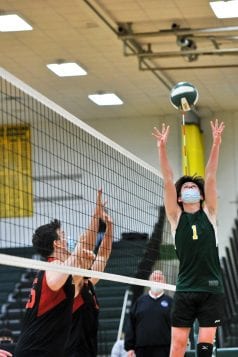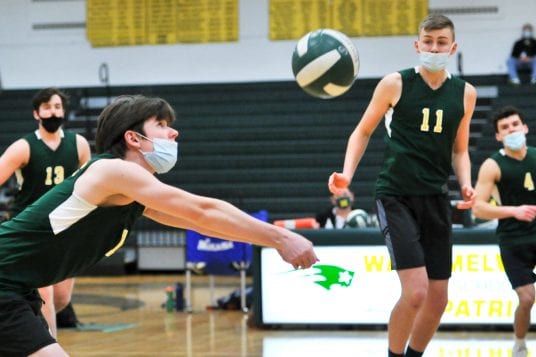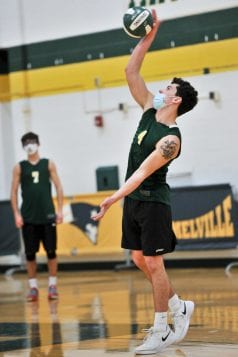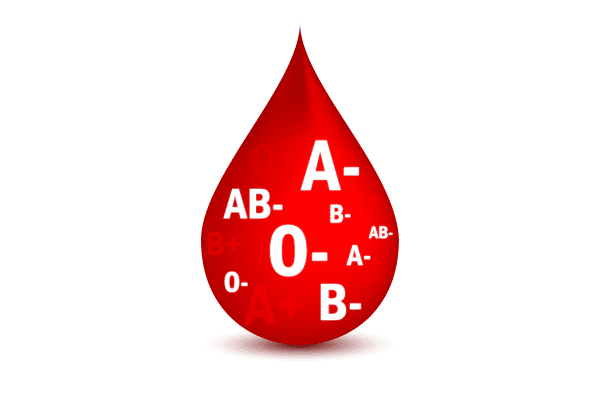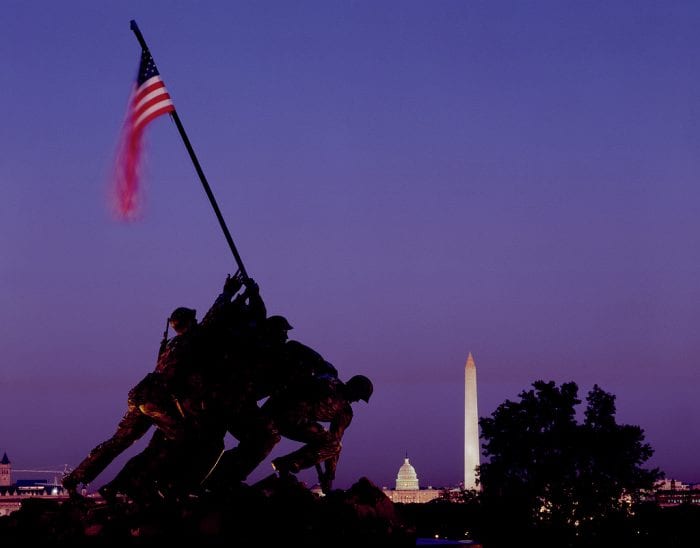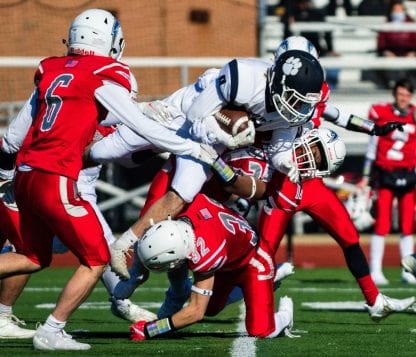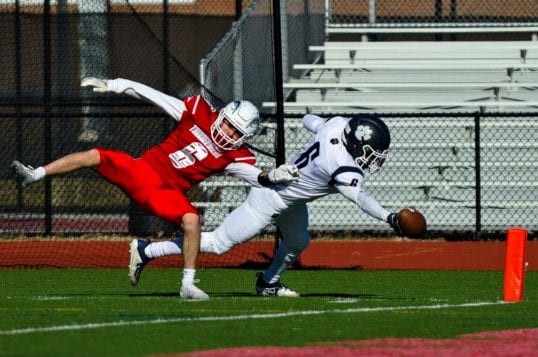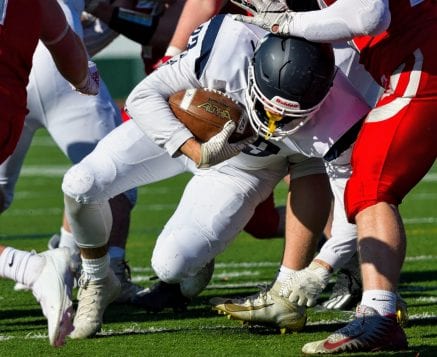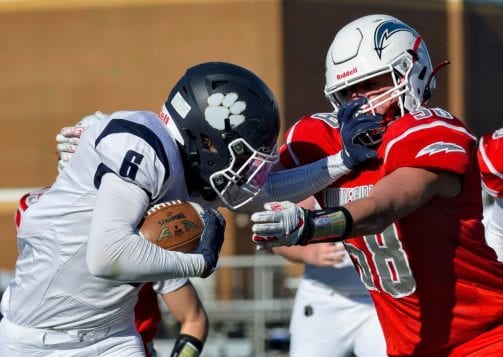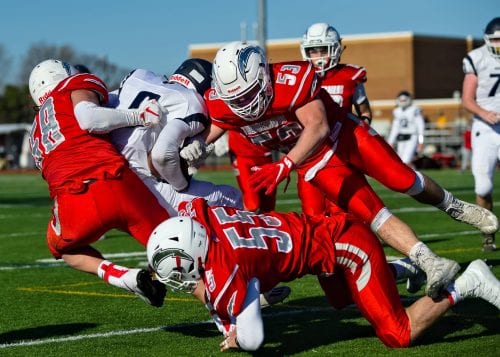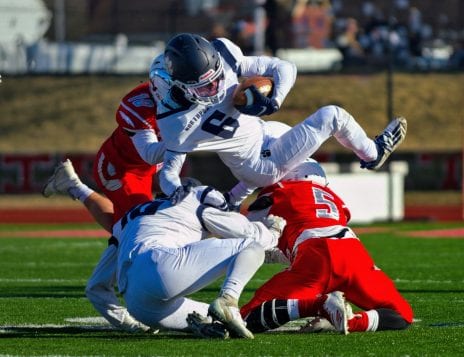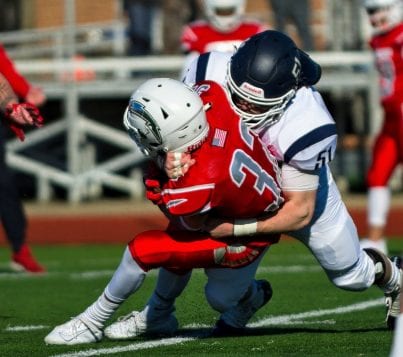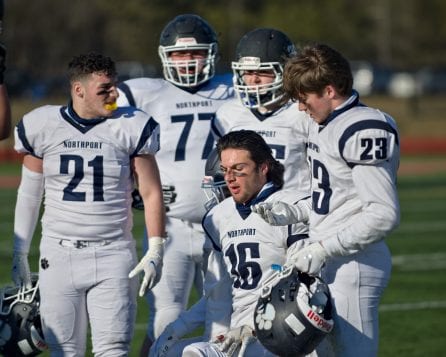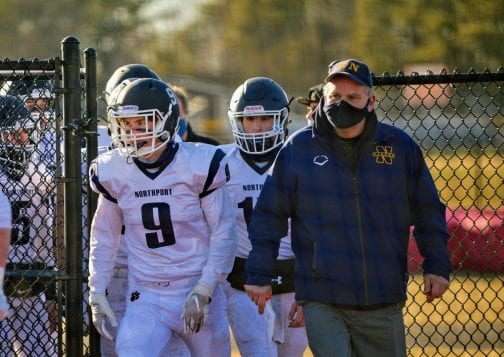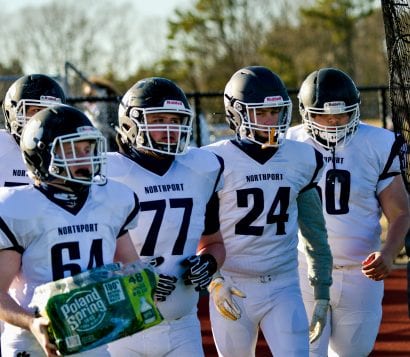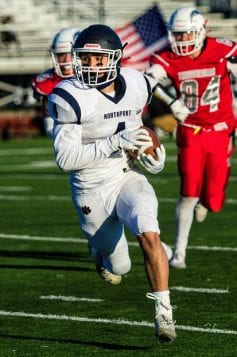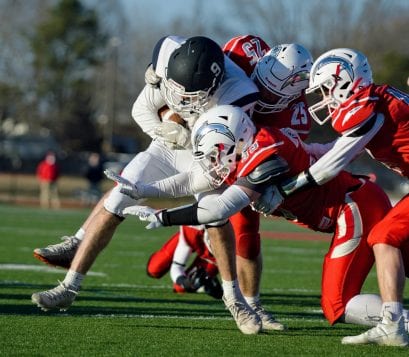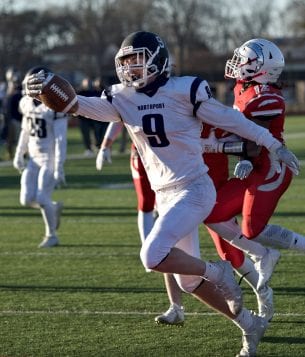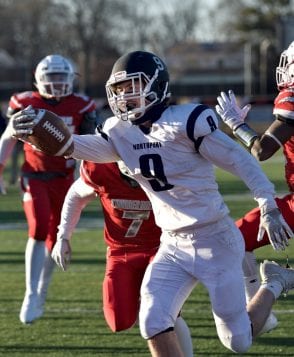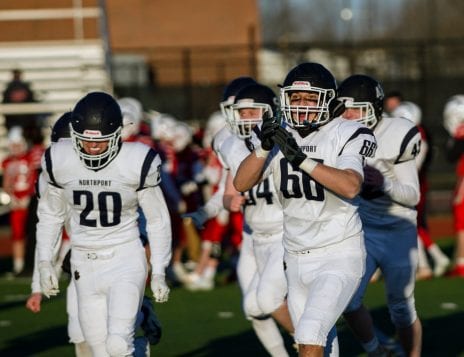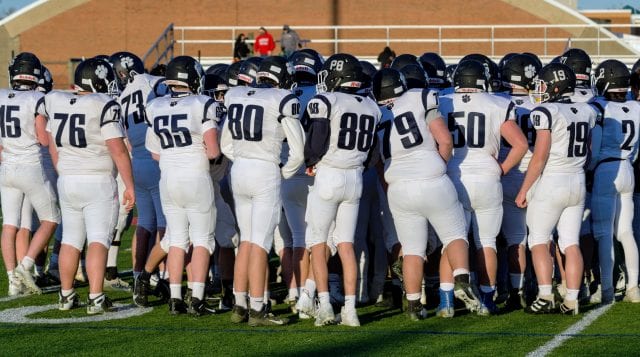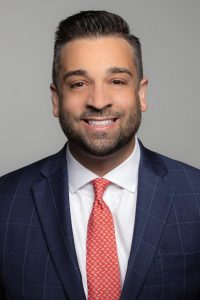By Daniel Dunaief

This month, we completed our first pandemic year. As we prepare for a hopeful future, please find below the words that reflected the realities of our past year.
— “We were behind the eight ball on testing for a while now,” Suffolk County Executive Steve Bellone (D) on a conference call with members of the National Association of Counties and the press, March 18, 2020.
– “These are not helpful hints. These are legal provisions. They will be enforced.” Governor Andrew Cuomo (D) on a conference call with reporters, describing his decision to shut down businesses not considered essential, March 20, 2020.
– “A lot of us are thinking about staff on the hospital side who are really being tested in an unprecedented way.” Cathrine Duffy, director of HealthierU, an employee wellness program at Stony Brook University, March 25, 2020.
— “I’ve never seen anything like it.” Joan Dickinson, community relations director at Stony Brook University, in response to the over 100 emails she received each night from people eager to donate to the university, March 27, 2020
— “For the N95 masks to come in without a charge helps all those local entities laying out a lot of cash at the moment.” Rep. Lee Zeldin (R-NY1) in response to the announcement that President Donald Trump (R) would ship 200,000 masks to Suffolk County, April 6, 2020.
— “I never imagined being in the position of reporting the numbers on a daily basis of people who have died in our county from anything like this.” Bellone on his daily conference call with reporters, April 12, 2020.
— “We feel that science will solve this problem, and hopefully soon.” John Hill, director of the National Synchrotron Light Source II, who was part of a team coordinating Brookhaven National Laboratory’s COVID-19 research across all the Department of Energy labs, April 19, 2020.
— “We have a hard winter ahead of us.” Bettina Fries, chief of the Division of Infectious Diseases at Stony Brook Renaissance School of Medicine, regarding projected increases in viral cases, April 23, 2020.
— “I always felt an urgency about cancer, but this has an urgency on steroids.” Mikala Egeblad, associate professor at Cold Spring Harbor Laboratory, in describing her efforts to apply her scientific expertise to COVID, April 26, 2020.
— “Coming to the hospital is still safer than going to the supermarket.” Todd Griffin, the president of Medical Staff and chair of the Department of Obstetrics, Gynecology and Reproductive Medicine at Stony Brook Renaissance School of Medicine, April 30, 2020.
— “We love you, but you can’t come anywhere near us.” Malcolm Bowman, distinguished service professor at Stony Brook University’s School of Marine and Atmospheric Sciences, recalls his extended family in New Zealand telling him and his wife Waveney as they left an old car with food at the airport so the couple could live in a camper in New Zealand , May 1, 2020.
— “At a certain point, it’s not just about the patient. It’s about the whole support system. You’re pulling not just for them, but for their whole family.” Amanda Groveman, Stony Brook quality management practitioner, describing the My Story effort to personalize patient stays at the hospital, May 7, 2020.
— “I always knew you were smart, but now I know you are brilliant.” Marna said to her daughter Tamara Rosen, who defended her graduate thesis at Stony Brook University through a Zoom call, May 24, 2020.
— The death of Minnesota resident George Floyd at the hands of police officers was “an outrage” and was “unacceptable.” Suffolk County Police Commissioner Geraldine Hart in a statement on a media call, May 30, 2020.
— Army veteran Gary Degrijze has “truly made a remarkable recovery.” Jerry Rubano, a doctor in Trauma/ Acute Care/ Surgical Critical Care in the Department of Surgery at Stony Brook Medicine, said after he spent seven weeks on a ventilator and twice lost his pulse , June 9, 2020.
— “You couldn’t have found a happier group of people.” Dr. Frank Darras, clinical professor of Urology and Clinical / Medical Director of the Renal Transplantation Program at Stony Brook Renaissance School of Medicine, about a transplant at 3:30 a.m. on a Saturday morning, June 12, 2020.
— “My whole career has brought me to be who I am in this moment.” Risco Mention-Lewis, deputy police commissioner, in the wake of protests over policing, July 3, 2020.
— “When you have untreated mental health and substance abuse disorders, the county will pay for that one way or the other.” Children’s Association Chief Executive Officer Jeffrey Reynolds amid an increase in demand for mental health during the pandemic, July 31, 2020.
— “People sent really moving and emotional notes. We saw a lot of good in people” [during a difficult time.] Colby Rowe, Trauma Center Education & Prehospital outreach coordinator who helped coordinate donations to Stony Brook, Aug. 7, 2020.
— “Long Islanders deserve better.” Thomas Falcone, CEO of LIPA, in response to a letter from Senator James Gaughran (D-Northport) questioning LIPA’s oversight of PSEG after extensive power outages and communication failures following Tropical Storm Isaias, Aug. 28, 2020.
— “I tell my patients, I take their hands, I say, ‘Listen, I was in there, too. I know what you’re feeling. I know you’re scared. I know you’re feeling you can die.” Feliciano Lucuix, a patient care assistant at St. Catherine of Siena Medical Center, describing her hospitalization with COVID and then her return to her work in the same hospital, Dec. 14, 2020.
— “As hard and as difficult and sad and heart wrenching [as it was], so many other parts, you just saw such humanity. It was amazing.” Patricia Coffey, nurse manager at the Critical Care Unit at Huntington Hospital reflecting on the challenges and responses of the health care field amid the pandemic, Dec. 31, 2020.
— “When we reach our number, we make an announcement inside.” Michael Connell, who runs the M.A. Connell Funeral Home in Huntington Station, said about alerting people about crowds awaiting a chance to visit with family during a funeral service, Feb. 26, 2021.




